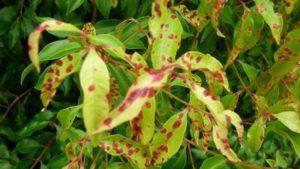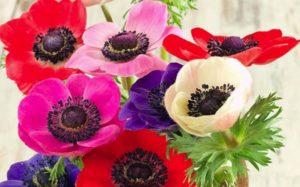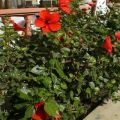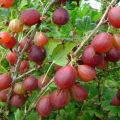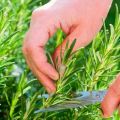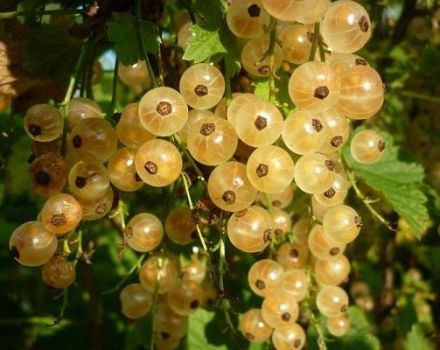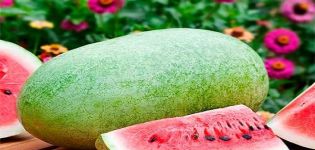Description of herbaceous hibiscus, planting, cultivation and care
Herbaceous (hybrid) hibiscus is easy to grow, therefore it decorates the gardens and summer cottages of many gardeners. Pleasant shades, luxurious appearance of the plant itself immediately catch the eye and make you think about the heavenly corners of our earth. It looks great against the backdrop of undersized bushes, and the variety of color palette allows you to choose hibiscus to your taste.
Characteristics and description of herbal hibiscus
The herbaceous garden hibiscus was developed by crossing several varieties of North American origin. Due to this, it is also called hybrid. The plant tolerates winter cold and a drop in temperature even down to -30 ° C, as well as drought in summer. Thanks to these characteristics, the shrub is especially fond of Russian flower growers.
In winter, the branches of the bush die off. A powerful and highly branched root system is perfectly preserved underground. In appearance, the roots are similar to tubers. The height of the shoots reaches 3 meters, which must be taken into account when choosing a place for planting. Leaf shape is oval or round, wide, dark green color. In general, it is similar to a sunflower leaf.
The flowering period of the herbaceous hibiscus is from mid-July to late October. Inflorescences sometimes reach 30 cm in diameter. The color range is presented in many shades from white to dark purple. There are also options with a combined color. Also, breeders have bred varieties with a double and corrugated type of inflorescences, but they are only suitable for growing in warm climatic conditions, since they do not tolerate frost well.
How to propagate a flower
There are several ways to breed hibiscus, each with their own advantages and disadvantages. Gardeners choose the most affordable and acceptable for their conditions.
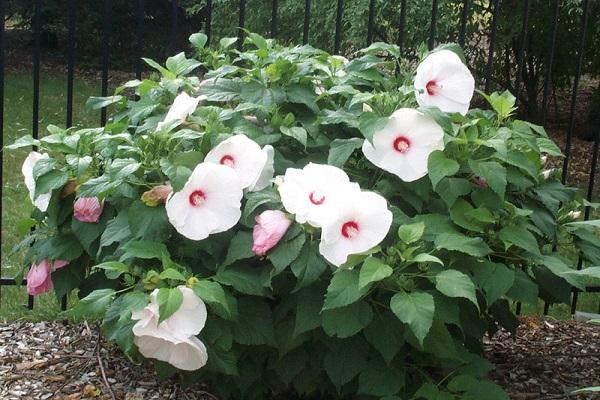
Seeds
The disadvantage of this method is that the grown plant may not retain the characteristics of the mother bush. This technique is most often used by breeders to obtain new varieties. Seeds that have been stratified are placed in a damp cloth and left for a week, sprinkling with water as they dry.
When the grains swell, they are laid out in a prepared container with soil mixture, sprinkled and watered with a spray bottle. The distance between the seeds is 0.5 cm. The container is covered with glass and placed in a well-lit warm place. Seedlings appear only after 3 weeks.As soon as a pair of true leaves is formed on them, the seedlings are divided into separate cups or pots. Hibiscus bloom will take place only after 3-4 years.
Autumn cuttings
This method requires picking a good, healthy twig at the top of the hibiscus bush. It is cut at an angle and the lower foliage is cut off. Before planting, the twig is placed in a container with water. Pour soil into a large pots and watered abundantly. The hibiscus is lowered into a hole made (up to 5 cm), sprinkled with soil and watered again.
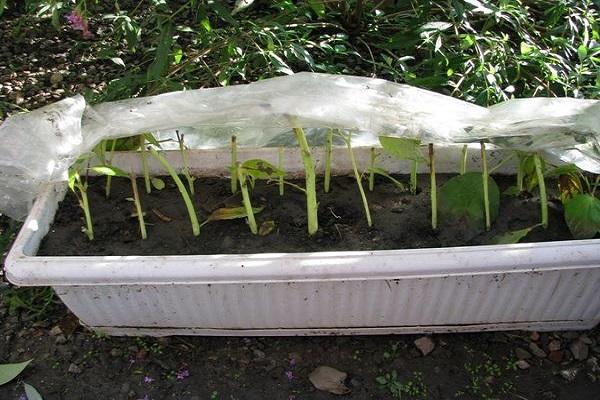
They make a greenhouse around the seedling and send it to a well-lit, warm place, protecting it from direct sunlight. You can check the formation of the root system in a month. To do this, the handle is gently pulled at the top. If the root system has already formed, then it will hold the branch. Already in the second year after landing on the site, such a hibiscus will delight with flowering.
Layering and dividing the bush
Only adults and hibiscus bushes that have had time to grow well are subject to division. The work is carried out in the spring. The plant is completely dug up, the root is cut into several parts and planted in different places.
Growing herb hibiscus
Growing a herbaceous hibiscus in your area is easy. To do this, you need to choose the right place for planting and provide the plant with at least minimal care.
Landing time and place
Planting is planned for late May or early June, when the weather is warm. The landing site should be well lit and protected from wind and drafts. The plant tends to grow rapidly, so it will need free space with a radius of 1.5-2 meters.
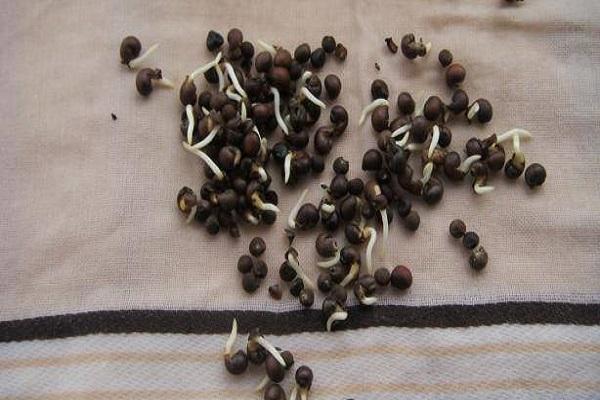
Hibiscus is thriving next to roses. But acidic and calcareous soils are not at all suitable for shrubs. The land in the selected area must contain good drainage, be fertilized and breathable.
Preparation of planting material
You should not choose hibiscus seedlings from foreign catalogs. It is better to give preference to plants from domestic nurseries. They are more adapted to our climatic conditions and get sick less after transplantation. It is preferable to purchase a seedling with open roots. They must be powerful and well developed. Hibiscus younger than 2 years old have not yet fully acclimatized, so they should not be purchased.
Open field planting technology
The hibiscus planting hole is dug a little wider than the volume of the root system, along with an earthy clod. A layer of sand with humus is poured onto the bottom, after which everything is watered abundantly. The seedling is installed in a prepared hole, covered with soil and again watered with water warmed up to room temperature. Immediately after planting, it is advisable to create partial shade for the plant.
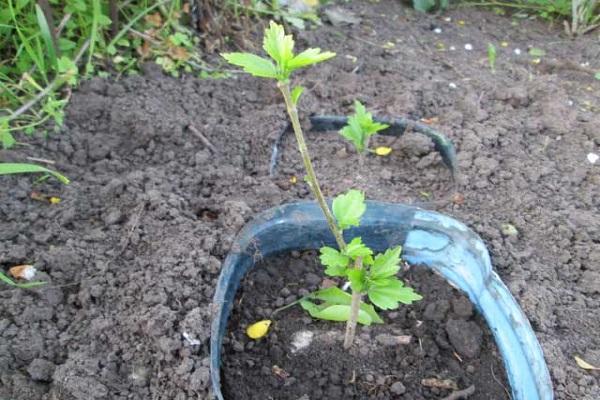
Features of plant care
Hibiscus is unpretentious and undemanding to care for, but if you pay due attention to it, the flower will surely thank you with exuberant and long flowering.
Watering
Hibiscus needs abundant and regular irrigation. This is especially true in the summer period. After the end of flowering, the number of waterings is immediately reduced. In no case should the water stagnate on the site. To this end, it is necessary to regularly loosen the soil and monitor its moisture content.
Watering hibiscus is carried out with settled water heated in the sun. Chlorinated shrub does not tolerate. In the morning and evening hours, the plant is sprayed. The frequency of watering depends on the weather conditions and the age of the seedling. Young hibiscus need more moisture. In hot and dry weather, irrigation is carried out as the topsoil dries out. If there is a critical shortage of water, the flower will shed buds and leaves.
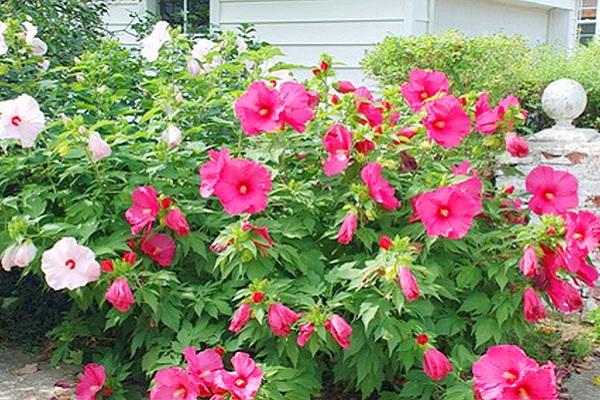
Top dressing
In order for the hibiscus to form buds more actively, in the spring it is fed with organic matter. Potassium-phosphorus fertilizers are also used. Further, during the growing season, fertilizing with nitrogen content is applied. With the onset of autumn, organic matter is introduced under the bushes.
Pruning
With the onset of cold weather, the branches of hibiscus dry out completely. At this time, they are cut to the root. The shrub does not need to be molded, but if there is a desire to get a lush and branched flower, then in the spring the top is slightly pinched.
Preparing for winter
Before the onset of stable cold weather, dried branches are cut almost to the root, the soil is watered abundantly. It is advisable to huddle the roots of the shrub and mulch the soil around it. The plant is covered with dry fallen leaves or sawdust.
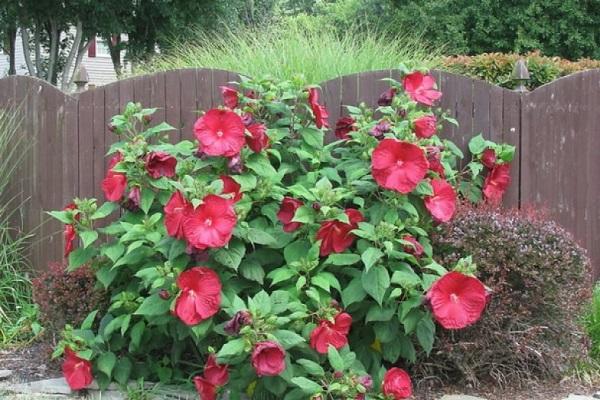
Disease and pest control methods
Hibiscus often suffers from chlorosis due to the fact that there is not enough iron in the water for irrigation and an excess of chlorine is observed. The disease manifests itself in yellowing and falling foliage. For the purpose of prophylaxis, the shrub is watered exclusively with settled water heated by the sun's rays. If the plant is already sick, then it must be sprayed with preparations containing chelated iron.
Herb hibiscus is attacked by pests such as:
- whitefly;
- aphid;
- spider mite.
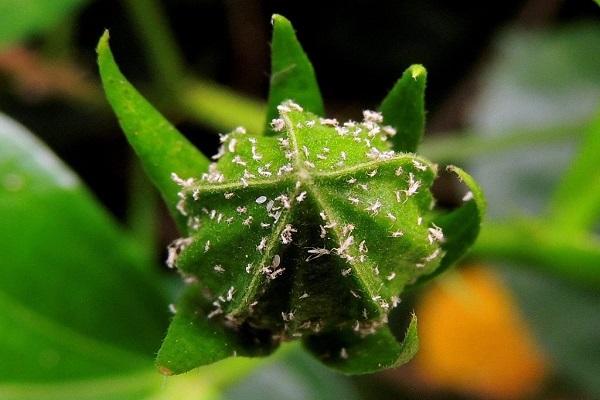
You can fight such pests by treating the bushes with insecticidal preparations:
- "Aktara";
- Intavir;
- "Kinmix".
Lavender and marigolds planted nearby will help protect the shrub from aphids. They are also saved from this pest by spraying with soap or garlic solution. Glue traps and dandelion infusion save the flower from the whitefly.
